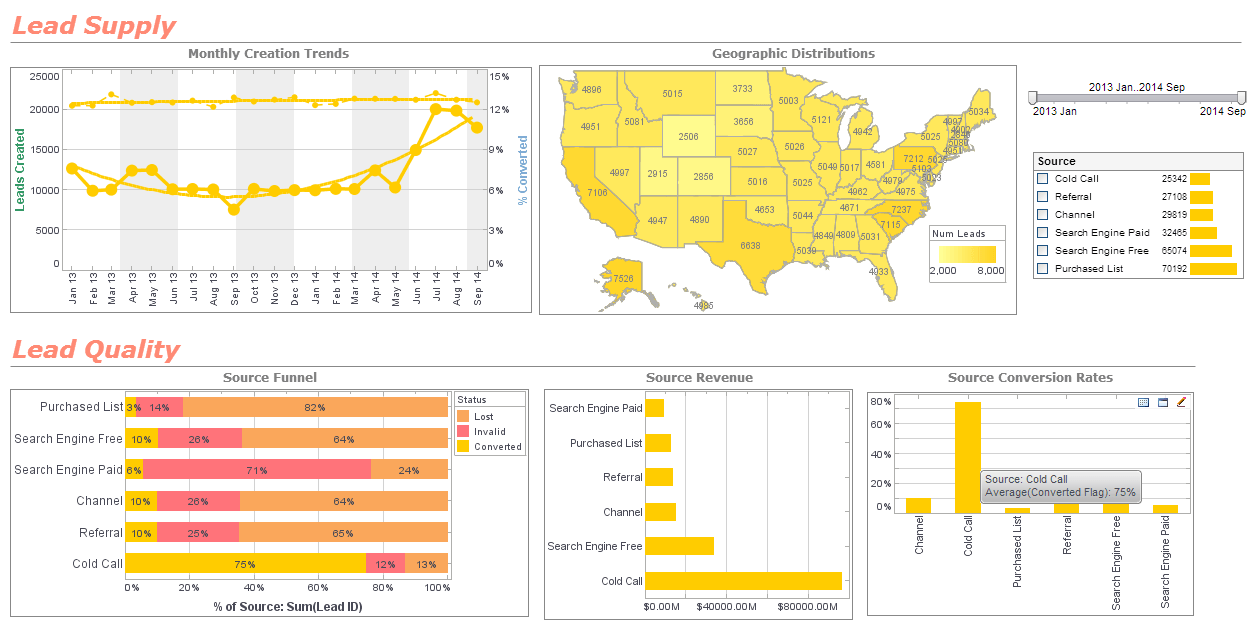InetSoft Seminar: After the Balanced Scorecard
This is the continuation of the transcript of an in-person customer seminar hosted by InetSoft on the topic of "Ingredients for a Performance Management System to Succeed." The speaker is Christopher Wren, Principal Consultant at TFI Consulting.
When companies talk about the before the balance scorecard and after the balance scorecard, and it makes much more sense to hear it in their words than it does in my marketing pitch as to what the benefits were. They are going to refer to the strategy map which is the heart of their balance scorecard, and they are going to talk about bubbles. Bubbles are their objectives on the strategy map.
It is pretty powerful stuff. It really is about changing hearts and minds, isn’t it? Notice they didn’t mention performance measures once in there, did they? And talk about engaged leadership, the new CEO on the stage when they showed the promise map said, “You know what’s important to me, this objective down here, getting the right people in this organization. I want to own that objective.”
 |
View a 2-minute demonstration of InetSoft's easy, agile, and robust BI software. |
That’s pretty powerful stuff. Then they signed the promise map. They had a great big frame made for it, about 4x6 foot. Everybody signed in the new organization, 200 people, as a commitment going forward, so pretty powerful.
Let’s talk about some best practices that I have observed. Then I am going to ask you for your help and ask what you have seen. We have talked about engaged leadership. We have talked about planning for a journey, not a project. We have talked about integrating communication and change management into the process and then actively manage that along the way, not as an afterthought.
Cross-functional teams, we think that’s the only way to build a system, made up of employees with different voices, so that you get Mary as well as the CEO talking to each other. Use a discipline framework. Whether you use ours or somebody else’s, make sure that you have a framework that allows you to connect the dots from high altitude down to low altitude.
Avoid the temptation to just put in a dashboard of performance measures. Keep the process transparent, this is crucial which is why we use the cross-functional teams. We want transparency built in, and again not as an overlay. A few more, leadership development, leadership development is not just the CEO.
What we are looking for is identifying leadership in different levels of the organization. Mary is the leader, so how do we bring her along and capture that enthusiasm after the novelty of the experience has gone. We want to build her leadership capability throughout and have it last for a long time.
 |
Read why choosing InetSoft's cloud-flexible BI provides advantages over other BI options. |
Folks, here are the traps, and we see it over and over again, what I call the rush to judgment. Getting to performance measures too quickly, the key question is not which one of our current measures should we use. The question is what should we be measuring? What are the results that we want? What are we trying to accomplish?
That’s how you get this strategic set of performance measures. It is not by looking at all the measures you are collecting and finding one that seems to fit. I was teaching our course. We have a three-day public workshop. We have a five-day boot camp and then we have a certificate program for balance scorecard practitioners.
And we just started one. And when we teach this, we almost always get the question about performance measures. How many measures? And somebody told me he has got 930 measures, and I say, “Wow, world record. What do you do with them?” He says, “Well, they are in the book,” and he goes like that.
I say, “Well, how many people see the book?” And he says, well, he didn’t know. He travels a lot. It’s in his library. Anybody can pull it out and use it. And I said, “Well, let me guess, 930 measures, you probably hired a consultant and paid him or her by the measure.” And he puts his head down like this so he was dutifully embarrassed.
And I said, “Let me ask you a different question. “How many of those are strategic, and how many do you think are operational?” And he pauses for a minute, and he says, “You know I think they are all operational.” That’s the trap. If you look at this as just a performance measurement exercise, you will develop mostly performance measures.
Read what InetSoft customers and partners have said about their selection of Style Report as their production reporting tool. |
Focus on current projects and activities. Let me repeat for the third time, strategy is not some of the stuff we are doing. Strategy is a game plan that’s tied to vision. It’s the next level of abstraction of our vision into some concrete things. We call them strategic themes or pillars. That’s what strategy is.
So be careful. When you facilitate people building this, make sure that you don’t let the discussion go too quickly on what are we currently doing. Or once again, just like on measures, you will lose the bubble, and that’s all people want to talk about is their favorite programs ands projects.
| Previous: Executive Strategy Planning |

